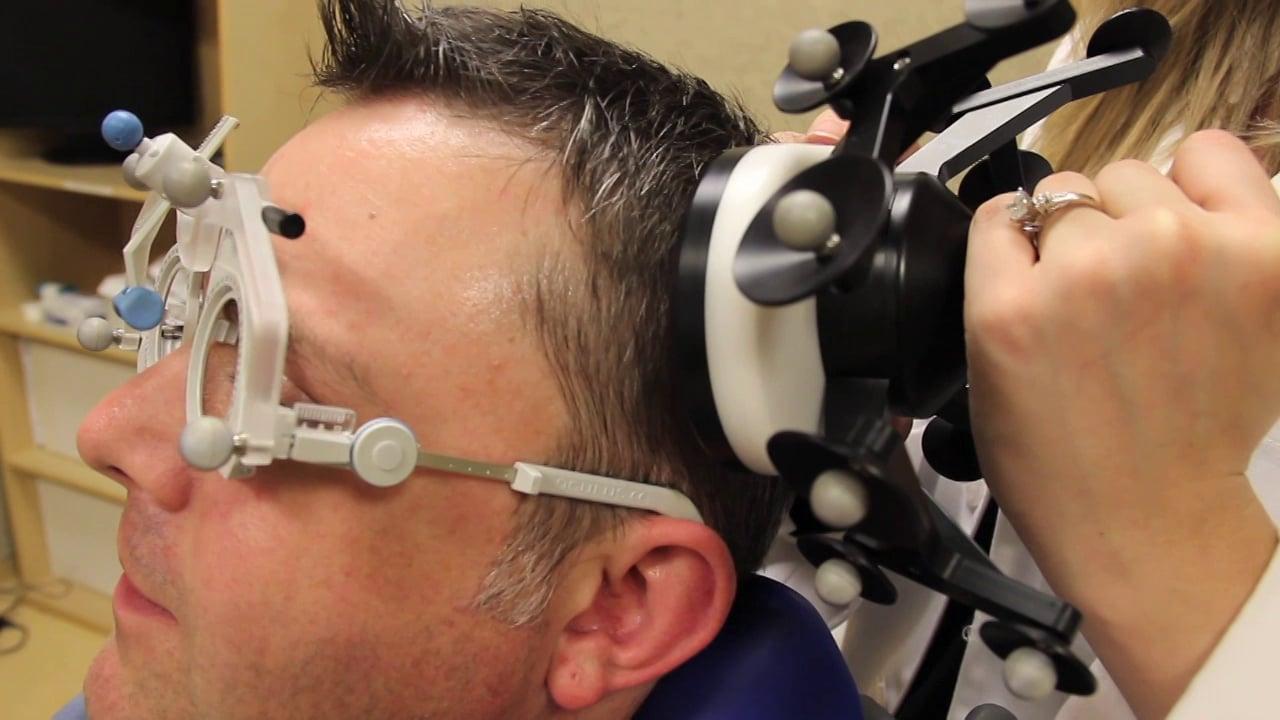Another treatment for facial pain may be around the corner.
A study was conducted in 2015 by researchers Hodaj, Alibeu, Payen, and Lefaucheur.1
The purpose of the study was to assess the long-term maintenance of pain relief achieved though high-frequency repetitive transcranial magnetic stimulation (rTMS) of the motor cortex.
The researchers used a sample of 55 patients; 19 with cluster headache, 21 with trigeminal neuropathic pain, and 15 with atypical facial pain. For 5 days per week for 2 consecutive weeks, the “Induction Phase”, the patients received rTMS daily. They then transitioned into the “Maintenance Phase” lasting just over 6 months in which they received a gradually diminishing amount of rTMS. Patients were given 2 sessions during the first maintenance week; then 1 session in each of the next 3 weeks. Then, for the next 5 months, they only received monthly sessions.
| Weeks 1-2 | Week 3 | Weeks 4-6 | Next 5 months | |
| rTMS Sessions | 5/week | 2/week | 1/week | 1/month |
The 2000 pulses of stimulation per session were performed over 10 minutes for a subset of the patients with the rest of the patients receiving 2000 pulses of stimulation over 20 minutes. Pain was assessed on a 0-10 visual scale before the study began, then again at 15 days and at 180 days after the study had begun.
The results were very encouraging. Every patient’s pain measurement was significantly lower at Day 15. Constant pain dropped from 5.2 (± 1.6) to 3.2 (± 1.9). Paroxysmal pain dropped from 8.6 (± 1.5) to 4.5 (± 3.4), and the daily number of painful attacks fell from 5.6 (± 3.1) to 2.3 (± 3.1). On Day 15, 73% of patients reported a decrease in pain of greater than 30%. That number dropped to 40% at Day 180.
| Day 1 | Day 15 | |
| Constant Pain | 5.2 | 3.2 |
| Paroxysmal Pain | 8.6 | 4.5 |
| Number of attacks | 5.6 | 2.3 |
The pain relief was similar regardless of the type of pain (cluster headache, trigeminal neuropathic pain, or atypical facial pain.) Pain relief was significantly lower when session duration was shortened, irrespective of the number of pulses.
The researchers concluded: “This long-term maintenance rTMS protocol can be a therapeutic option in the clinical management of patients with chronic refractory facial pain, including cluster headache. However, only part of the patients respond to this technique and session duration should not be reduced.”
Researchers are continuing to explore rTMS for facial pain.
University of Minnesota – Clinical and Translational Science Institute is currently recruiting participants for a study entitled “Transcranial Magnetic Stimulation for Facial Pain.”
Specific Aims:
- To establish baseline patterns of MRI in patients with chronic oro-facial pain without a definitive etiologic diagnosis.
- To estimate the rate of treatment success of transcranial stimulation of the primary motor cortex (M1) in these patients.
- To identify post-treatment MRI patterns that are associated with treatment success.
Conditions eligible to participate:
- trigeminal neuralgia Type 2 (TN2)
- trigeminal neuropathic pain (TNP)
- trigeminal deafferentation pain (TDP)
- post herpetic neuralgia (PHN)
- atypical facial pain (AFP)
- geniculate neuralgia (GN) [aka nervus intermediate neuralgia]
This study is currently recruiting participants.
| Estimated Enrollment: | 20 |
| Study Start Date: | August 2016 |
| Estimated Study Completion Date: | December 2017 |
| Estimated Primary Completion Date: | June 2017 (Final data collection date for primary outcome measure) |
For more information and to get involved, click here.
1.Brain Stimul. 2015 Jul-Aug;8(4):801-7. doi: 10.1016/j.brs.2015.01.416. Epub 2015 Feb 7.↩

